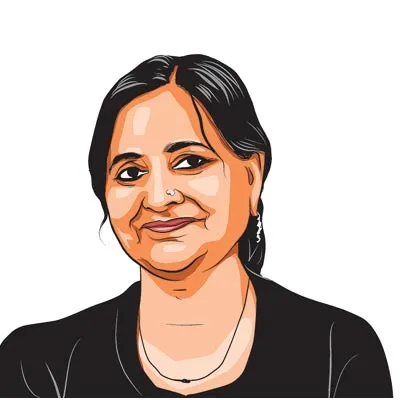Opinion As CJI, D Y Chandrachud let justice down
While it is difficult to foretell how posterity will judge him, he has left a great deal to be desired. Surely, he could have done more to restore people’s faith in the Supreme Court
 Former Chief Justice of India D Y Chandrachud
Former Chief Justice of India D Y Chandrachud For almost a decade, there has been a feeling among a large section of citizens that authoritarianism is gaining ground and what is needed is a strong and independent judiciary. When former Chief Justice of India D Y Chandrachud took over, people saw him as someone who would stem the rot and turn the tide. They were proved wrong.
While it is difficult to foretell how posterity will judge him, he has left a great deal to be desired. Surely, he could have done more to restore people’s faith in the Supreme Court. Thousands of people are languishing in jail without bail and trial. In the Supreme Court, too, many habeas corpus petitions and bail applications are pending. Umar Khalid’s bail application has come to symbolise the apathy of the courts towards individual freedom. The former CJI, while granting bail to Arnab Goswami, reportedly observed “if this court were not to interfere today, we are travelling in a path of destruction of personal liberty”. Were these words meant only for a chosen few? He also reportedly said that he granted bail from Arnab to Zubair. With the greatest of respect to him, there are many Arnabs and Zubairs who are awaiting similar relief. Should he not, in the light of his own observations, have constituted dedicated benches to hear cases involving individual liberty, even if the setting up of Constitution benches took a backseat?
Justice Chandrachud will be remembered as the CJI who put his seal of approval on the Allahabad High Court verdict upholding the Varanasi district judge’s order in the Gyanvapi mosque case, allowing a scientific survey by the Archaeological Survey of India of the mosque complex to ascertain the veracity of the claims about a pre-existing Hindu temple. The order was passed despite the Places of Worship (Special Provisions) Act 1991, which was intended to put a quietus to all such claims in the interest of harmony. Will this order not embolden some Hindu organisations to lay similar claims on other mosques, and thus threaten communal harmony?
In the case of the Maharashtra Assembly, though he passed severe stricture against the then governor of the state for inviting Eknath Shinde to form the government, when it came to reinstating Uddhav Thackeray as Chief Minister, he declined relief on the ground that he had resigned before facing the floor test. Should he have allowed a government which came into existence by deceit and manipulation to continue?
In the Chandigarh mayoral election, the Returning Officer was caught on camera interpolating the ballot papers. CJI Chandrachud called it murder of democracy, and yet, let him off the hook by merely ordering an enquiry against him under section 340 of CrPC.
In the case of the Electoral Bond Scheme, while the scheme was struck down as unconstitutional, a SIT was not formed to go into the allegations of quid pro quo between the corporates and the politicians. And why was a part-heard matter suddenly withdrawn from the court of Justice Sanjay Kishan Kaul on the eve of his retirement? The sphinx-like silence speaks loud.
Much has been said about the Prime Minister’s visit to the former CJI’s house for Ganpati Puja. He tried to justify the visit by describing it as part of continuing meetings between the judiciary and the executive at a social level. He reportedly said: “Deals are not cut like this”. But it was all about propriety. Judges are supposed to maintain a degree of distance from the political class — because judges hold an office of public trust and the actions of the former often come under the scrutiny of the latter. Any private interaction between the two can shake people’s faith in the judiciary. But the former CJI found nothing wrong in such meetings. Thereby the code which judges had voluntarily adopted under the stewardship of the then CJI J S Verma, was left in the dust.
Finally, his revelation that he penned the Ayodhya judgment after seeking guidance from his deity leaves one wondering: What happens to the Constitution and the laws?
Goodbye, Chief Justice Chandrachud.
The writer is a former judge of the Delhi High Court



